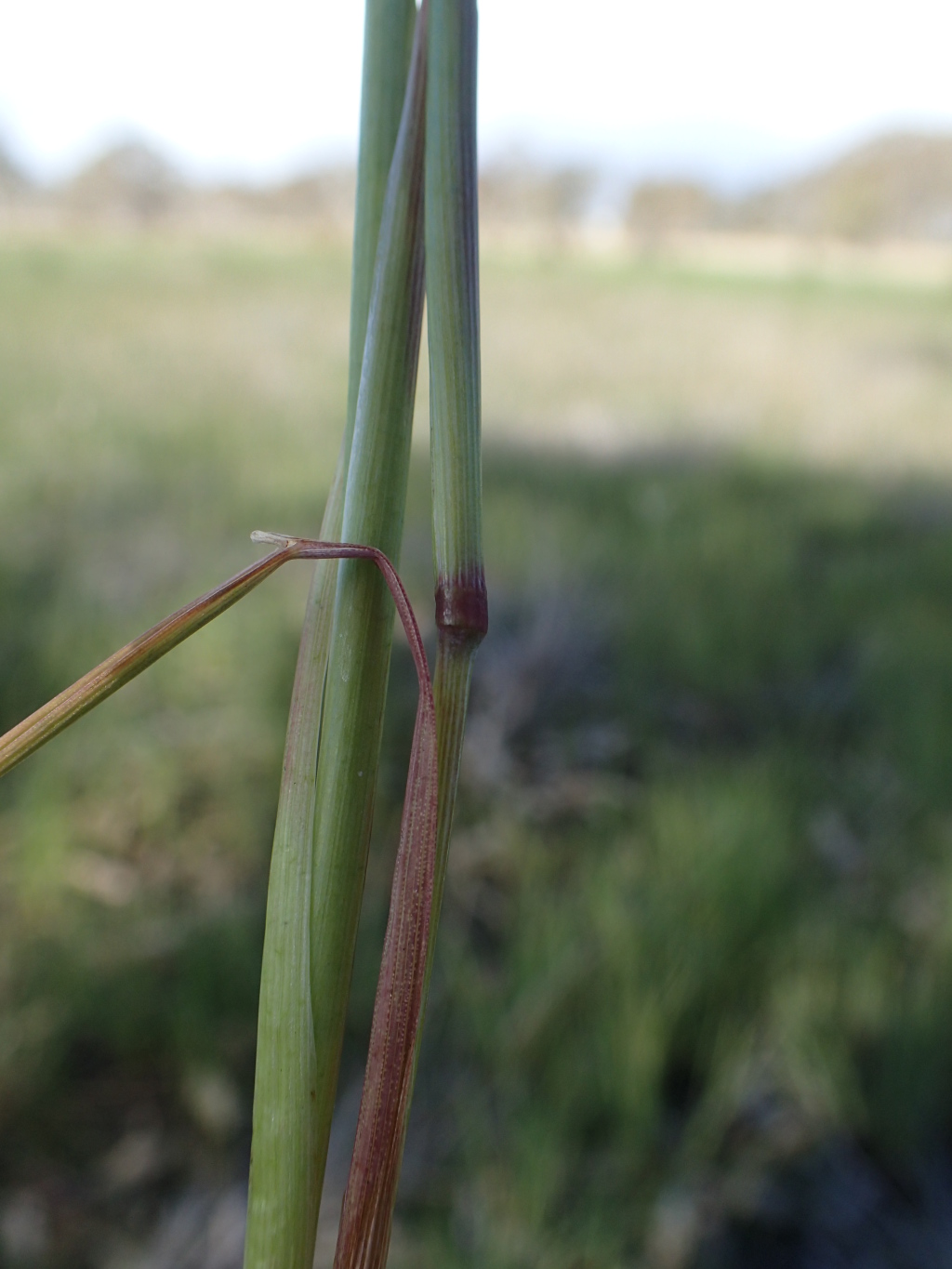Alopecurus geniculatus
L. Marsh Fox-tailTufted perennial or annual, culms decumbent, commonly rooting at nodes, finally ascending, to 50 cm long. Leaves glabrous, virtually smooth; blade to 15 cm long and (2–)4–8 mm wide; ligule acute to obtuse, membranous, 1–5 mm long. Inflorescence a spike-like panicle, 2–6(–8) cm long, 4–6 mm wide; glumes 2–3.5 mm long, obtuse, hyaline at apex, connate only at base, hairy along keel and margins; lemma subequal to glumes, obtuse, glabrous, shining brown at maturity, margins usually free, occasionally connate in lower 1–1.5 mm; awn 3–7 mm long, geniculate, inserted about one-quarter above base of lemma; palea absent. Anthers 0.7–1.8 mm long. Flowers Aug.–Dec.
LoM, MuM, Wim, GleP, VVP, VRiv, MSB, RobP, MuF, GipP, OtP, Gold, CVU, DunT, NIS, HSF, HNF, Strz. Also naturalised WA, SA, Qld, NSW, Tas. Native to much of the Northern Hemisphere and introduced throughout much of the Southern Hemisphere. In Victoria, a widespread species of wet or low-lying, open sites, particularly in the west, occasionally growing partly submerged and then the stems commonly long and rooting freely from nodes.
Alopecurus australis was described as an indigenous Australian species, but it is generally agreed that the plant represented by that name is not specifically distinct from A. geniculatus and was an early introduction into this country.
Walsh, N.G. (1994). Poaceae. In: Walsh, N.G.; Entwisle, T.J., Flora of Victoria Vol. 2, Ferns and Allied Plants, Conifers and Monocotyledons, pp. 356–627. Inkata Press, Melbourne.
 Spinning
Spinning




